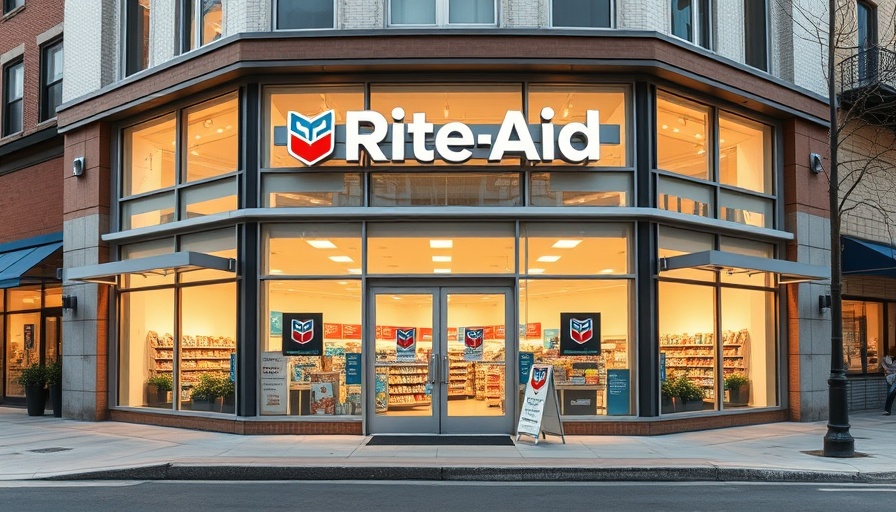
Rite Aid's Resolute Bankruptcy Sale: Navigating Retail Challenges
The approval of Rite Aid’s pharmacy asset sales represents a significant development in the competitive landscape of retail pharmacy. A bankruptcy judge has given the green light for these sales, involving notable players such as CVS and Walgreens, reflecting a broader trend where traditional pharmacy chains face rising pressures from various fronts.
The Impetus Behind Rite Aid's Bankruptcy
Rite Aid's financial struggles are no secret. The company entered its second bankruptcy in just two years amid ongoing challenges, including stagnant reimbursement rates from payers, escalating labor costs, dwindling consumer demand for front-store products, and fierce competition from e-commerce disruptors like Amazon. With over $2 billion in debt, the company is now on a path of liquidation, desperate to salvage what it can for its lenders.
What This Means for Pharmacy Competitors
The sales are a strategic opportunity for Rite Aid’s competitors. CVS, which leads the market with its vast network of pharmacies, seized the chance to acquire prescription files from 625 Rite Aid stores across 15 states. This acquisition not only allows CVS to expand its consumer base but also offers a potential lifeline for Rite Aid customers who may find their healthcare services transitioning smoothly into CVS’s system.
The Community Impact: Pharmacies and Health and Wellness
As community health and wellness centers, pharmacies serve vital roles beyond just dispensing medication. For many customers, especially the elderly, the local pharmacy is a place of connection, personalized healthcare, and advice on health and wellness products. The transition of Rite Aid customers to CVS may affect not just where people get their prescriptions but also the holistic care and guidance they receive.
Future Perspectives: Healthcare System Evolution
This significant change offers an opportunity to rethink how pharmacies fit within community health frameworks. As CVS absorbs Rite Aid’s business, it could pave the way for innovative approaches to health and wellness. This transition emphasizes the need for pharmacies to adapt and expand their roles as central players in supporting health initiatives, underlining a community-centric model to address broader health needs.
Navigating Loss and Opportunity
With the closure of Rite Aid, many employees will inevitably lose their jobs. However, CVS has expressed its willingness to hire displaced Rite Aid staff, providing a glimmer of hope amidst the turmoil. They seek to welcome those transitioning from Rite Aid into their workforce, essential not just for the employees but also for ensuring continuity in customer service and maintaining a knowledgeable staff capable of managing the influx of new customers.
The Role of Alternative Medicine in Health and Wellness
As discussions around health and wellness evolve, more people are turning to complementary and alternative medicines as part of their overall health strategies. This is especially relevant for those affected by the changing landscape of pharmacy chains. Programs and blogs focused on nutritional supplements, natural therapies, and holistic treatments are growing in popularity as consumers seek integrated solutions to their health problems. Naturopathy, yoga, and alternative medicines are becoming common discussions among health-conscious individuals, reflecting a surplus choice in managing personal health.
Conclusion: The Importance of Community Health Connections
As the retail pharmacy sector continues to undergo such drastic changes, particularly with Rite Aid's transition, it's vital for consumers to realize the importance of health and wellness connections within their communities. Pharmacies will continue to serve crucial roles; thus, retaining focus on community health initiatives will benefit all stakeholders involved.
 Add Row
Add Row  Add
Add 




 Add Row
Add Row  Add
Add 


Write A Comment